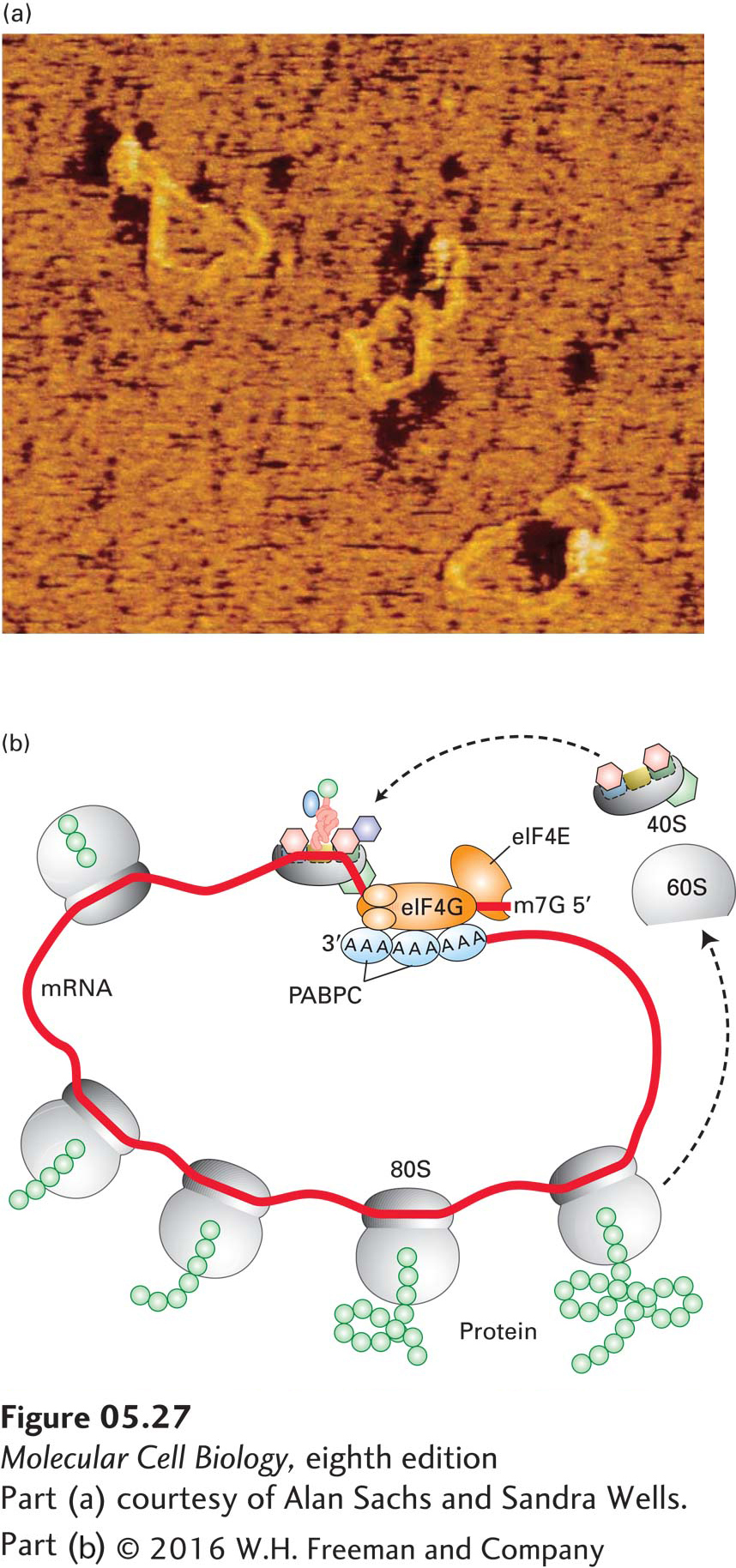
EXPERIMENTAL FIGURE 5- 27 Circular structure of mRNA increases translation efficiency. Eukaryotic mRNA forms a circular structure owing to interactions of three proteins. (a) In the presence of purified yeast poly(A)-binding protein [PABP; there is only one PABP in S. cerevisiae, rather than a nuclear (PABPN) and cytoplasmic (PABPC) protein as in higher eukaryotes], eIF4E, and eIF4G, eukaryotic mRNAs form circular structures, visible in this force- field electron micrograph. In these structures, protein- protein and protein- mRNA interactions form a bridge between the 5′ and 3′ ends of the mRNA. (b) Model of protein synthesis on circular polysomes and recycling of ribosomal subunits. Multiple individual ribosomes can simultaneously translate a eukaryotic mRNA, shown here in a circular form stabilized by interactions between proteins bound at the 3′ and 5′ ends. When a ribosome completes translation and dissociates from the 3′ end, the separated subunits can rapidly find the nearby 5′ cap (m7G) and PABPC- bound poly(A) tail and initiate another round of synthesis.
[Part (a) courtesy of Alan Sachs and Sandra Wells.]
[Leave] [Close]